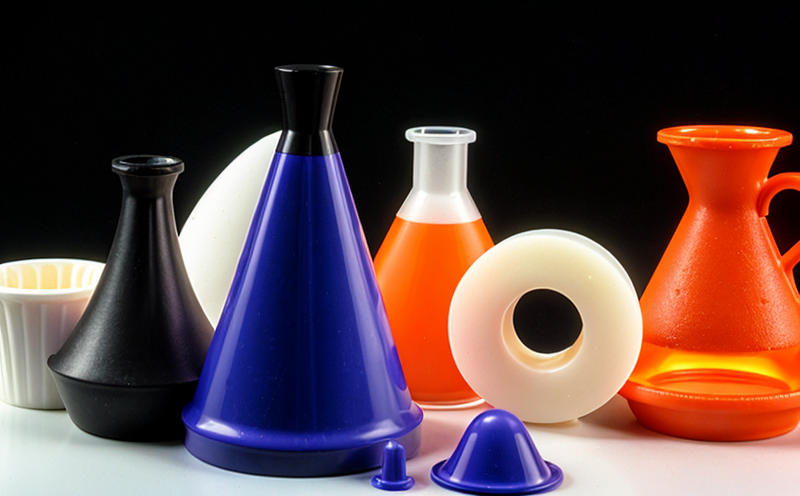ISO 2039 Hardness Testing of Plastics
The ISO 2039 hardness testing method is a standardized procedure used to determine the hardness of plastics. This test plays a crucial role in quality assurance, product development, and compliance with international standards for materials used in various industries such as automotive, electronics, and household goods.
Hardness testing helps manufacturers ensure that their products meet specific performance requirements, which is especially important for polymers that undergo significant mechanical stress. The ISO 2039 method uses a small indenter to measure the resistance of the plastic sample to indentation under controlled conditions. This allows for precise quantification of the material's hardness.
The test involves placing a standard indenter onto the surface of the specimen and gradually applying force until it penetrates the surface by a specific distance. The resulting force is then measured, providing a numerical value that represents the material's resistance to indentation. This value can be used as a key performance indicator in product development.
ISO 2039 hardness testing ensures consistency and repeatability across different labs and samples, which is essential for quality control. It also allows for comparisons between different batches of materials or between the same batch over time. This standardization enhances the reliability of test results and facilitates international trade by ensuring that all parties are working to a common set of criteria.
The process begins with careful preparation of the specimen, which must be free from defects and surface imperfections. Specimens can take various forms depending on the application, including plaques, rods, or small blocks. After preparation, the test sample is placed into the testing machine that is equipped with a specific indenter tip.
The test setup ensures that environmental factors such as temperature and humidity are controlled to minimize variability in results. The specimen is then subjected to a defined load for a fixed period before the indenter is removed. This allows for accurate measurement of the indentation depth, which is used to calculate the hardness value according to the ISO 2039 formula.
The resulting hardness values are reported using standardized units, typically in terms of Shore Hardness (Shore D). These values provide critical information about the material's properties and can be used to optimize formulations or select appropriate materials for specific applications. For instance, higher hardness values indicate greater resistance to indentation, which is desirable in applications requiring durability.
Understanding the nuances of ISO 2039 testing helps quality managers, compliance officers, R&D engineers, and procurement professionals make informed decisions about material selection and process optimization. By incorporating this test into their workflows, they can ensure that products meet both internal and external requirements, thereby enhancing product performance and reliability.
- Consistent results across different labs
- Repeatability of tests ensuring accuracy
- Facilitates comparisons between batches or over time
- Enhances product performance and reliability
- Supports compliance with international standards
- Aids in material selection for specific applications
Scope and Methodology
The ISO 2039 hardness test is specifically designed to evaluate the Shore hardness of vulcanized rubber, thermoplastic elastomers, and similar materials. This method provides a standardized approach for determining the resistance of these materials to indentation using a specified indenter.
The procedure involves applying a force to an indenter that penetrates the surface of the sample until it reaches a predetermined depth. The force is then measured and used to calculate the hardness value according to the Shore D scale. This scale ranges from 0 (softest) to 100 (hardest), providing a quantitative measure of material hardness.
The test setup includes a testing machine equipped with a specific indenter, typically a steel ball or cone-shaped tip. The specimen is placed on the machine's platen and secured in position. A specified weight is then applied to the indenter, which penetrates the surface until it reaches the required depth. This penetration depth is recorded and used to calculate the hardness value.
It is important that the test conditions are strictly controlled, including temperature, humidity, and specimen orientation, to ensure accurate results. The specimen must also be prepared in a specific manner to avoid introducing variability into the test. Factors such as surface finish, thickness, and uniformity can significantly affect the hardness value.
The method specifies the use of standard samples that are used for calibration purposes. These reference materials allow operators to verify the accuracy of their testing equipment and ensure consistent results across different instruments. Regular calibration and maintenance of the testing machine are essential to maintaining the integrity of test results.
International Acceptance and Recognition
The ISO 2039 hardness test enjoys widespread international acceptance due to its rigorous standardization. This method is recognized by organizations such as ASTM, EN, and IEC, which further enhances its global relevance.
Countries around the world have incorporated this test into their national standards, recognizing its importance in ensuring product quality and safety. Manufacturers from various sectors rely on ISO 2039 to meet regulatory requirements and maintain a competitive edge in international markets.
The test's global acceptance is particularly significant in industries where material hardness can significantly impact performance. For example, in the automotive industry, ensuring that parts have the right hardness is crucial for durability and safety. In electronics manufacturing, selecting the appropriate polymer for casings or connectors ensures functionality and longevity.
By adhering to ISO 2039, manufacturers can demonstrate compliance with international standards, which is increasingly important in a globalized market. This standardization also fosters collaboration between suppliers and customers by providing a common language and methodology.
The use of this test in quality assurance processes ensures that products meet the highest performance requirements, contributing to overall consumer safety and satisfaction. As such, ISO 2039 hardness testing remains a cornerstone of material evaluation across numerous industries worldwide.





